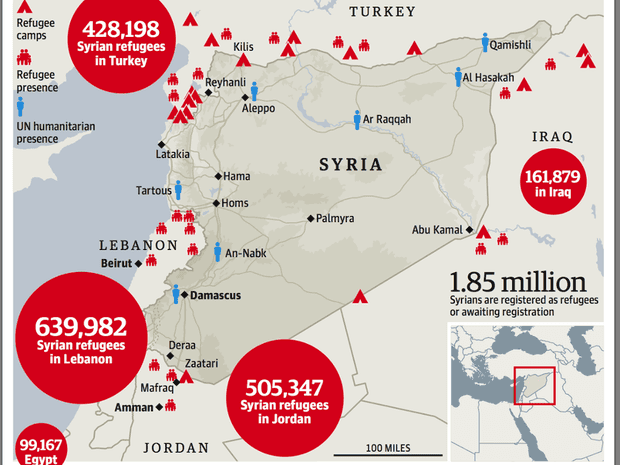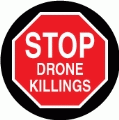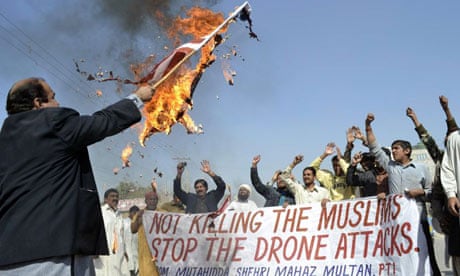DRONECIDE: 4 million + Muslim lives lost (1990-2016.) June 20 World Refugee Day MUSLIM LIVES MUST MATTER!!
- Details
- Published on Monday, 20 June 2016 10:30
- Written by editor
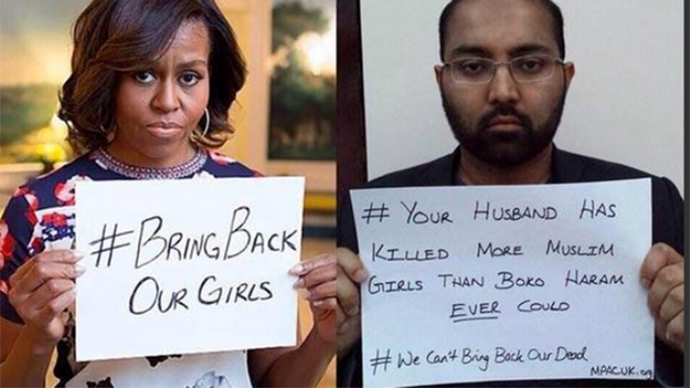

Collateral damage
aka
4 million Muslim lives lost...
From Wikipedia, the free encyclopedia Jump to: navigation, search For other uses, see Collateral damage (disambiguation).Collateral damage is a general term for deaths, injuries, or other damage inflicted on an unintended target. In military terminology, it is frequently used for the incidental killing or wounding of non-combatants or damage to non-combatant property during an attack on a legitimate military target.[1][2] The unintentional destruction of friendly targets is called friendly fire.
Critics of the term see it as a euphemism that dehumanizes non-combatants killed or injured during combat, used to reduce the perception of culpability of military leadership in failing to prevent non-combatant casualties.[3][4][5][6]
Contents
[hide]- 1 Etymology
- 2 Non-military uses of the phrase
- 3 Controversy
- 4 International humanitarian law
- 5 U.S. military approach
- 6 See also
- 7 References
- 8 External links
Etymology[edit]
The word "collateral" comes from medieval Latin collateralis, from col-, "together with" + lateralis (from latus, later-, "side" ) and is otherwise mainly used as a synonym for "parallel" or "additional" in certain expressions ("collateral veins" run parallel to each other and "collateral security" means additional security to the main obligation in a contract). The first known usage of the term "collateral damage" in this context occurred in a May 1961 article written by T. C. Schelling entitled "DISPERSAL, DETERRENCE, AND DAMAGE".[7]
The USAF Intelligence Targeting Guide defines the term "[the] unintentional damage or incidental damage affecting facilities, equipment, or personnel, occurring as a result of military actions directed against targeted enemy forces or facilities. Such damage can occur to friendly, neutral, and even enemy forces".[1] Another United States Department of Defense document uses "[u]nintentional or incidental injury or damage to persons or objects that would not be lawful military targets in the circumstances ruling at the time. Such damage is not unlawful so long as it is not excessive in light of the overall military advantage anticipated from the attack."[8]
Intent is the key element in understanding the military definition as it relates to target selection and prosecution. Collateral damage is damage aside from that which was intended. Since the dawn of precision guided munitions, military "targeteers" and operations personnel are often alleged to have gone to great lengths to minimize collateral damage.[9]
Non-military uses of the phrase[edit]
The term 'collateral damage' has also been borrowed by the computing community to refer to the denial of service to legitimate users when administrators take blanket preventative measures against some individuals who are abusing systems. For example, Realtime Blackhole Lists used to combat email spam generally block ranges of Internet Protocol (IP) addresses rather than individual IPs associated with spam, and can deny legitimate users within those ranges the ability to send email to some domains.
The related term collateral mortality is also becoming prevalent, and probably derives from the term collateral damage. It has been applied to other spheres in addition to the original military context. An example is in fisheries where bycatch of species such as dolphins are called collateral mortality; i.e., they are species that die in pursuit of the legal death of fishery targets, such as tuna.[10]
Controversy[edit]
The U.S. military states the term is used in regards to unintentional or incidental damage to non-combatant casualties and non-combatant property,[1] however, at least one source claims that the term "collateral damage" originated as a euphemism during the Vietnam War and can refer to friendly fire, or the intentional killing of non-combatants and the destruction of their property.[11]
On December 7, 1941, the Imperial Japanese Navy led a sneak attack on Pearl Harbor, killing almost 2,500 people and causing the American entry into World War II. The U.S. and Japan were not officially at war when the attack happened and thus it could be seen as a deliberate attack on non-combatants. However, the primary objective of the sneak attack were the battleships, aircraft, and oil facilities, not the neutral military personnel and civilians, but some argued that the people themselves were also deliberate targets. During World War II, widespread civilian casualties and damage to civilian property were caused by strategic bombing of enemy cities. If the intent of the strategic bombing was to destroy the enemy's war industry, then civilian casualties were called collateral damage. Given the low accuracy of bombing technology in WWII, it was inevitable that civilian casualties would occur. However, the Japanese bombing of Chongqing, the Allied strategy of creating firestorms in cities such as Hamburg or Tokyo,[12] and the indiscriminate attacks by the Germans on Allied cities with V-weapons fall outside the definition of collateral damage as these raids were meant to or suspected of intentionally terrorizing and killing enemy civilians.[13][14][15]
Also during the 1991 Gulf War, Coalition forces used the phrase 'collateral damage' to describe the killing of civilians in attacks on legitimate targets. According to Scottish linguist Deborah Cameron,[16] "the classic Orwellian argument for finding this usage objectionable would be that
- it is jargon, and to the extent that people cannot decode it, it conceals what is actually going on;
- it is a euphemism; abstract, agentless and affectless, so that even if people succeed in associating it with a real act or event they will be insulated from any feeling of repulsion and moral outrage".
In 1999, "collateral damage" (German: Kollateralschaden) was named the German Un-Word of the Year by a jury of linguistic scholars. With this choice, it was criticized that the term had been used by NATO forces to describe civilian casualties during the Kosovo War, which the jury considered to be an inhuman euphemism.[17]
When Wikileaks released a video of a 2007 airstrike in Baghdad, they titled it Collateral Murder, as a parody of the phrase.
International humanitarian law[edit]
Military necessity, along with distinction, and proportionality, are three important principles of international humanitarian law governing the legal use of force in an armed conflict and how that relates to collateral damage.
Luis Moreno-Ocampo, Chief Prosecutor at the International Criminal Court, investigated allegations of war crimes during the 2003 invasion of Iraq and he published an open letter containing his findings. A section titled "Allegations concerning War Crimes" elucidates this use of Military necessity, distinction and proportionality:
Under international humanitarian law and the Rome Statute, the death of civilians during an armed conflict, no matter how grave and regrettable, does not in itself constitute a war crime. International humanitarian law and the Rome Statute permit belligerents to carry out proportionate attacks against military objectives,[18] even when it is known that some civilian deaths or injuries will occur. A crime occurs if there is an intentional attack directed against civilians (principle of distinction) (Article 8(2)(b)(i)) or an attack is launched on a military objective in the knowledge that the incidental civilian injuries would be clearly excessive in relation to the anticipated military advantage (principle of proportionality) (Article 8(2)(b)(iv).
Article 8(2)(b)(iv) criminalizes:
Intentionally launching an attack in the knowledge that such attack will cause incidental loss of life or injury to civilians or damage to civilian objects or widespread, long-term and severe damage to the natural environment which would be clearly excessive in relation to the concrete and direct overall military advantage anticipated;
Article 8(2)(b)(iv) draws on the principles in Article 51(5)(b) of the 1977 Additional Protocol I to the 1949 Geneva Conventions, but restricts the criminal prohibition to cases that are "clearly" excessive. The application of Article 8(2)(b)(iv) requires, inter alia, an assessment of:
(a) the anticipated civilian damage or injury;
(b) the anticipated military advantage;
U.S. military approach[edit]
The U.S. military follows a technology-based process for estimating and mitigating collateral damage. The software used is known as "FAST-CD" or "Fast Assessment Strike Tool—Collateral Damage."[20]
See also[edit]
- Acceptable loss
- Aesopian language
- Civilian casualty ratio
- Distancing language
- Doublespeak
- Externality
- Geneva Conventions
- July 12, 2007 Baghdad airstrike
- Philosophy of war
- Realpolitik
- Targeted killing
- Total war
- War crime
- Beyond Precision: Issues of Morality and Decision Making in Minimizing Collateral Casualties, ACDIS Occasional Paper by Lt. Col. Dwight A. Roblyer
- USAF Intelligence Targeting Guide - Attachment 7: Collateral Damage
- The Culture of Collateral Damage: A Genealogy by Glen Perice, The Journal of Poverty, Volume 10, No. 4, 2007
- Army Technology
- Air Force Law Review, Wntr, 2005 by Jefferson D. Reynolds
- The Faces of "Collateral Damage" by Charlie Clements, Friends Journal, April 2003
- Collateral Damage during NATO bombing of SR Yugoslavia 1999 Warning: explicit images
- "Collateral Damage: A Military Euphemism for Murder" by Camillo Mac Bica, Znet, 16 April 2007



Civilian casualties
from US drone

strikes
From Wikipedia, the free encyclopedia Jump to: navigation, search
According to the Long War Journal, as of mid-2011, the drone strikes in Pakistan since 2006 had killed 2,018 militants and 138 civilians.[1] The New America Foundation stated in mid-2011 that from 2004 to 2011, 80% of the 2,551 people killed in the strikes were militants. The Foundation stated that 95% of those killed in 2010 were militants and that, as of 2012, 15% of the total people killed by drone strikes were either civilians or unknown.[2] The foundation also states that in 2012 the rate of civilian and unknown casualties was 2 percent, whereas the Bureau of Investigative Journalism say the rate of civilian casualties for 2012 is 9 percent.[3]
The Bureau of Investigative Journalism, based on extensive research in mid-2011, claims that at least 385 civilians were among the dead, including more than 160 children.[4] In July 2009, Brookings Institution released a report stating that in the United States-led drone attacks in Pakistan, ten civilians died for every militant killed.[5][6] S. Azmat Hassan, a former ambassador of Pakistan, said in July 2009 that American UAV attacks were turning Pakistani opinion against the United States and that 35 or 40 such attacks only killed 8 or 9 top al-Qaeda operatives.[7]
Although it may never be known how many civilians have died as a result of U.S. UAV strikes in Pakistan, there are estimates of hundreds or thousands of innocent bystanders who have perished in such attacks.[8] Pakistani authorities released statistics stating that between 1 January 2009 and 31 December 2009, U.S. RQ-1 Predator and RQ-9 Reaper UAV strikes have killed over 700 innocent civilians. The website PakistanBodyCount.Org (by Zeeshan-ul-hassan Usmani, a Fulbright Scholar at the Florida Institute of Technology) shows 1,065 civilian deaths between June 2004 and 30 January 2010 and tallies 103 UAV strikes carried out by the United States.[9]
With the increase of UAV strikes, January 2010 proved to be a deadly month in Pakistan with 123 innocent civilians killed, according to a story in The International News. In addition, it has been reported that 160 children have died from UAV-launched attacks in Pakistan.[10] Further, over 1,000 civilians have been injured.[11] These sources run counter to the Obama administration's claim that "nearly for the past year there hasn't been a single collateral death" due to UAV-based attacks.[12]
According to the 24 February 2010 policy analysis "The Year of the Drone", released by the New America Foundation, the civilian fatality rate since 2004 is approximately 32%. The study reports that 114 reported UAV-based missile strikes in northwest Pakistan from 2004 to present killed between 830 and 1,210 individuals, around 550 to 850 of whom were militants.[13]
After more than 30 UAV-based strikes hit civilian homes in Afghanistan in 2012, President Hamid Karzai demanded that such attacks end, but the practice continues in areas of Pakistan, Yemen, and Somalia. Former U.S. President Jimmy Carter has criticized such use of UAVs: "We don't know how many hundreds of innocent civilians have been killed in these attacks ... This would have been unthinkable in previous times."[14]
In October 2013, the Pakistani government revealed that since 2008, civilian casualties made up only 3 percent of deaths from drone strikes. Since 2008, there have been 317 drone strikes that killed 2,160 Islamic militants and 67 civilians. This is less than previous government and independent organization calculations of collateral damage from these attacks.[15]
An attack by the US in December 2013, in a wedding procession in Yemen, killed 12 men and wounded at least 15 other people, including the bride. US and Yemeni officials said the dead were members of the armed group Al-Qaeda in the Arabian Peninsula (AQAP), but witnesses and relatives told Human Rights Watch the casualties were civilians. Witnesses and relatives told Human Rights Watch that no members of AQAP were in the procession and provided names and other information about those killed and wounded. They said the dead included the groom's adult son and the bride received superficial face wounds. The local governor and military commander called the casualties a "mistake" and gave money and assault rifles to the families of those killed and wounded – a traditional gesture of apology in Yemen. A few days after the incident, Yemeni MPs voted for a ban against the use of drones in Yemen, though it is unclear what effect this will have on drone usage.[16][17]
There are a number of vocal critics of the use of UAVs to track and kill terrorists and militants. A major criticism of drone strikes is that they result in excessive collateral damage. David Kilcullen and Andrew Exum wrote in the New York Times that drone strikes "have killed about 14 terrorist leaders. But, according to Pakistani sources, they have also killed some 700 civilians. This is 50 civilians for every militant killed, a hit rate of 2 percent." Studies have put the civilian casualty rate anywhere between 4 and 35 percent.[18] It is difficult to reconcile these figures because the drone strikes are often in areas that are inaccessible to independent observers and the data includes reports by local officials and local media, neither of whom are reliable sources. Critics also fear that by making killing seem clean and safe, so-called surgical UAV strikes will allow the United States to remain in a perpetual state of war. However, others maintain that drones "allow for a much closer review and much more selective targeting process than do other instruments of warfare" and are subject to Congressional oversight.[19] Like any military technology, armed UAVs will kill people, combatants and innocents alike, thus "the main turning point concerns the question of whether we should go to war at all."[19]
References[edit]
- Jump up ^ Roggio, Bill, and Alexander Mayer, "Charting the data for US airstrikes in Pakistan, 2004 – 2011", Long War Journal, 5 July 2011. Retrieved 11 July 2011. Archived February 18, 2015, at the Wayback Machine.
- Jump up ^ "Out of the blue". The Economist. 30 July 2011. Retrieved 16 December 2011.
- Jump up ^ Counting civilian casualties in CIA's drone war, Foreign Policy
- Jump up ^ Woods, Chris (10 August 2011). "Drone War Exposed – the complete picture of CIA strikes in Pakistan". Bureau of Investigative Journalism. Retrieved 16 December 2011.
- Jump up ^ https://web.archive.org/web/20101021221653/http://www.dawn.com/wps/wcm/connect/dawn-content-library/dawn/news/world/13+drones+kill+10+civilians+for+one+militant-za-09. Archived from the original on October 21, 2010. Retrieved March 15, 2015. Missing or empty |title= (help), Dawn (newspaper), 21 July 2009
- Jump up ^ Daniel L. Byman (14 July 2009). "Do Targeted Killings Work?". The Brookings Institution. Retrieved 8 January 2015.
- Jump up ^ Newsweek, 8 July 2009. Anita Kirpalani, "Drone On. Q&A: A former Pakistani diplomat says America's most useful weapon is hurting the cause in his country." Retrieved on 3 August 2009.
- Jump up ^ Peter Bergen and Katherine Tiedemann (18 October 2009). "Revenge of the Drones". New America Foundation. Retrieved 20 September 2011.
- Jump up ^ "Home". PakistanBodyCount.org. Retrieved 31 March 2012.
- Jump up ^ Woods, Chris (11 August 2011). "Over 160 children reported among drone deaths". The Bureau of Investigative Journalism. Retrieved 20 September 2011.
- Jump up ^ Woods, Chris (10 August 2011). "You cannot call me lucky – drones injure over 1,000". The Bureau of Investigative Journalism. Retrieved 20 September 2011.
- Jump up ^ Muhammad Idrees Ahmad (30 July 2011). "Fighting Back against the CIA drone war". Al Jazeera. Retrieved 20 September 2011.
- Jump up ^ Peter Bergen and Katherine Tiedemann. "2004–2011". New America Foundation. Archived from the original on August 30, 2011. Retrieved 10 September 2011.
- Jump up ^ Carter, Jimmy (24 June 2012). "A Cruel and Unusual Record". New York Times.
- Jump up ^ Sebastian Abbot and Munir Ahmed (31 October 2013). "Pakistan says 3% of drone deaths civilians". Usa Today. Associated Press. Retrieved 8 January 2015.
- Jump up ^ "US: Yemen Drone Strike May Violate Obama Policy". Human Rights Watch.
- Jump up ^ "The Aftermath of Drone Strikes on a Wedding Convoy in Yemen". The New York Times.
- Jump up ^ Shane, Scott (11 August 2011). "C.I.A. Is Disputed on Civilian Toll in Drone Strikes". The New York Times. Retrieved 2 July 2013.
- ^ Jump up to: a b Etzioni, Amitai (March–April 2013). "The Great Drone Debate" (PDF). Military Review. Archived from the original (PDF) on 22 May 2013.

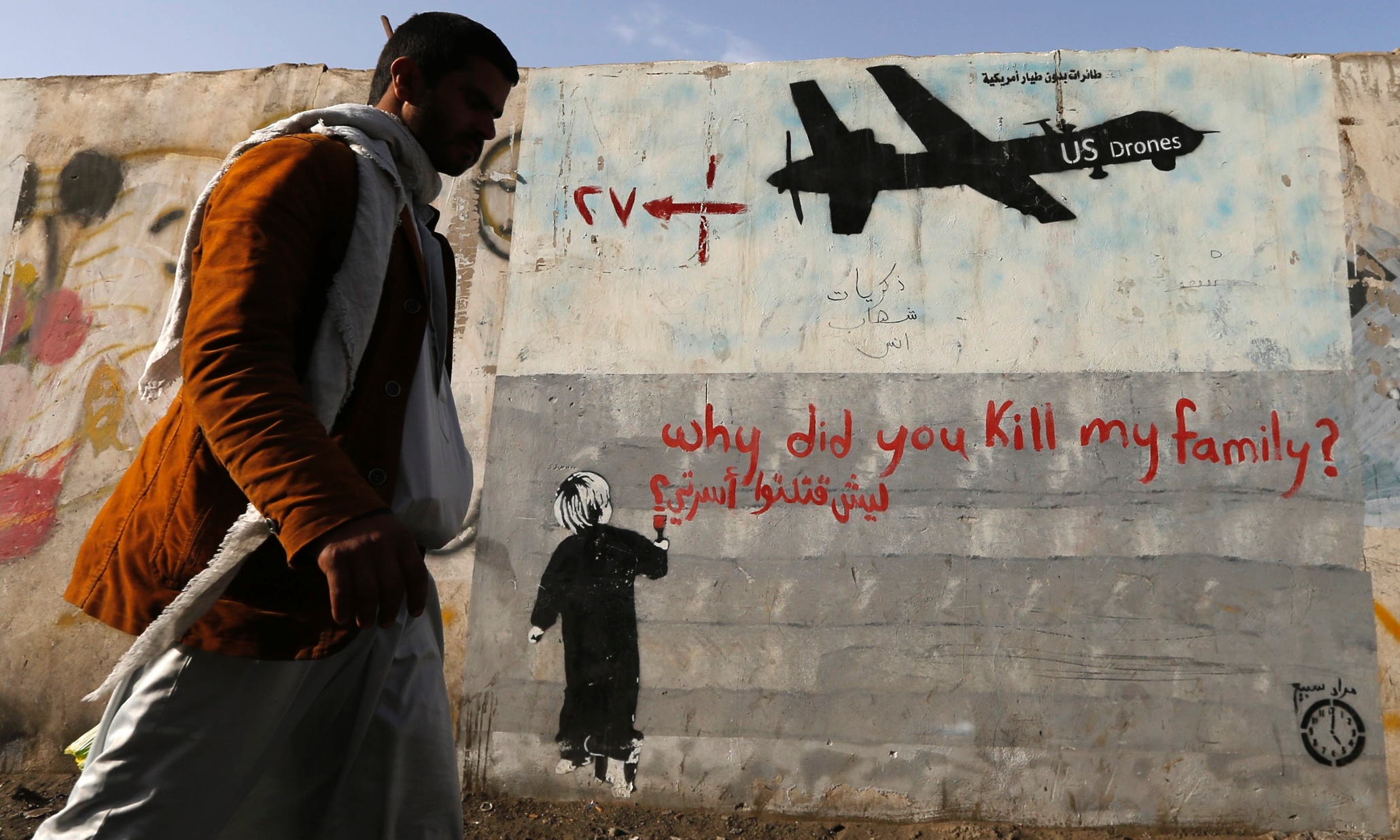

DAILY CHILD BODY COUNT EVERYWHERE IN MIDDLE EAST..
Do The Math: Global War On Terror
Has Killed
4 Million Muslims
DRONE ATTACK
COLLATERAL DAMAGE
DAILY OUTRAGE
& RADICALISED BLOWBACK!!
Or More
A recent study suggests the "War on Terror" has had two million victims, but reporter Nafeez Ahmed claims this may be only a fraction of the total dead from Western wars. By MintPress News Desk | August 3, 2015

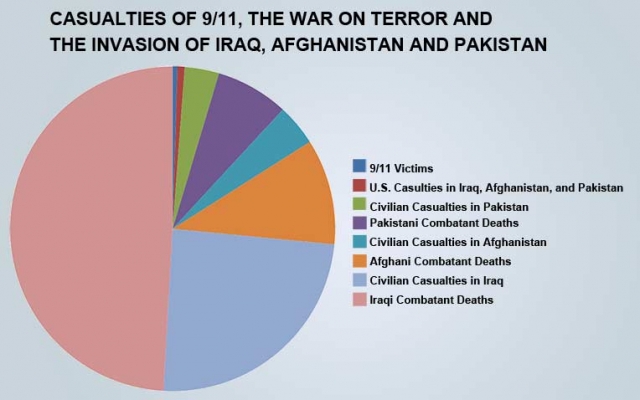

Unworthy victims
: Western wars
have killed
four million Muslims
since 1990
#HumanRights
Landmark research proves that the US-led 'war on terror' has killed as many as 2 million people, but this is a fraction of Western responsibility for deaths in Iraq and Afghanistan over the last two decades
Last month, the Washington DC-based Physicians for Social Responsibility (PRS) released a landmark study concluding that the death toll from 10 years of the "War on Terror" since the 9/11 attacks is at least 1.3 million, and could be as high as 2 million.
The 97-page report by the Nobel Peace Prize-winning doctors' group is the first to tally up the total number of civilian casualties from US-led counter-terrorism interventions in Iraq, Afghanistan and Pakistan.
The PSR report is authored by an interdisciplinary team of leading public health experts, including Dr. Robert Gould, director of health professional outreach and education at the University of California San Francisco Medical Center, and Professor Tim Takaro of the Faculty of Health Sciences at Simon Fraser University.
Yet it has been almost completely blacked out by the English-language media, despite being the first effort by a world-leading public health organisation to produce a scientifically robust calculation of the number of people killed by the US-UK-led "war on terror".
Mind the gaps
The PSR report is described by Dr Hans von Sponeck, former UN assistant secretary-general, as "a significant contribution to narrowing the gap between reliable estimates of victims of war, especially civilians in Iraq, Afghanistan and Pakistan and tendentious, manipulated or even fraudulent accounts".
The report conducts a critical review of previous death toll estimates of "war on terror" casualties. It is heavily critical of the figure most widely cited by mainstream media as authoritative, namely, the Iraq Body Count (IBC) estimate of 110,000 dead. That figure is derived from collating media reports of civilian killings, but the PSR report identifies serious gaps and methodological problems in this approach.
For instance, although 40,000 corpses had been buried in Najaf since the launch of the war, IBC recorded only 1,354 deaths in Najaf for the same period. That example shows how wide the gap is between IBC's Najaf figure and the actual death toll – in this case, by a factor of over 30.
Such gaps are replete throughout IBC's database. In another instance, IBC recorded just three airstrikes in a period in 2005, when the number of air attacks had in fact increased from 25 to 120 that year. Again, the gap here is by a factor of 40.
According to the PSR study, the much-disputed Lancet study that estimated 655,000 Iraq deaths up to 2006 (and over a million until today by extrapolation) was likely to be far more accurate than IBC's figures. In fact, the report confirms a virtual consensus among epidemiologists on the reliability of the Lancet study.
Despite some legitimate criticisms, the statistical methodology it applied is the universally recognised standard to determine deaths from conflict zones, used by international agencies and governments.
Politicised denial
PSR also reviewed the methodology and design of other studies showing a lower death toll, such as a paper in the New England Journal of Medicine, which had a range of serious limitations.
That paper ignored the areas subject to the heaviest violence, namely Baghdad, Anbar and Nineveh, relying on flawed IBC data to extrapolate for those regions. It also imposed "politically-motivated restrictions" on collection and analysis of the data - interviews were conducted by the Iraqi Ministry of Health, which was "totally dependent on the occupying power" and had refused to release data on Iraqi registered deaths under US pressure.
In particular, PSR assessed the claims of Michael Spaget, John Sloboda and others who questioned the Lancet study data collection methods as potentially fraudulent. All such claims, PSR found, were spurious.
The few "justified criticisms," PSR concludes, "do not call into question the results of the Lancet studies as a whole. These figures still represent the best estimates that are currently available". The Lancet findings are also corroborated by the data from a new study in PLOS Medicine, finding 500,000 Iraqi deaths from the war. Overall, PSR concludes that the most likely number for the civilian death toll in Iraq since 2003 to date is about 1 million.
To this, the PSR study adds at least 220,000 in Afghanistan and 80,000 in Pakistan, killed as the direct or indirect consequence of US-led war: a "conservative" total of 1.3 million. The real figure could easily be "in excess of 2 million".
Yet even the PSR study suffers from limitations. Firstly, the post-9/11 "war on terror" was not new, but merely extended previous interventionist policies in Iraq and Afghanistan.
Secondly, the huge paucity of data on Afghanistan meant the PSR study probably underestimated the Afghan death toll.
Iraq
The war on Iraq did not begin in 2003, but in 1991 with the first Gulf War, which was followed by the UN sanctions regime.
An early PSR study by Beth Daponte, then a US government Census Bureau demographer, found that Iraq deaths caused by the direct and indirect impact of the first Gulf War amounted to around 200,000 Iraqis, mostly civilians. Meanwhile, her internal government study was suppressed.
After US-led forces pulled out, the war on Iraq continued in economic form through the US-UK imposed UN sanctions regime, on the pretext of denying Saddam Hussein the materials necessary to make weapons of mass destruction. Items banned from Iraq under this rationale included a vast number of items needed for everyday life.
Undisputed UN figures show that 1.7 million Iraqi civilians died due to the West's brutal sanctions regime, half of whom were children.
The mass death was seemingly intended. Among items banned by the UN sanctions were chemicals and equipment essential for Iraq's national water treatment system. A secret US Defence Intelligence Agency (DIA) document discovered by Professor Thomas Nagy of the School of Business at George Washington University amounted, he said, to "an early blueprint for genocide against the people of Iraq".
In his paper for the Association of Genocide Scholars at the University of Manitoba, Professor Nagi explained that the DIA document revealed "minute details of a fully workable method to 'fully degrade the water treatment system' of an entire nation" over a period of a decade. The sanctions policy would create "the conditions for widespread disease, including full scale epidemics," thus "liquidating a significant portion of the population of Iraq".
This means that in Iraq alone, the US-led war from 1991 to 2003 killed 1.9 million Iraqis; then from 2003 onwards around 1 million: totalling just under 3 million Iraqis dead over two decades.
Afghanistan
In Afghanistan, PSR's estimate of overall casualties could also be very conservative. Six months after the 2001 bombing campaign, The Guardian's Jonathan Steele revealed that anywhere between 1,300 and 8,000 Afghans were killed directly, and as many as a further 50,000 people died avoidably as an indirect result of the war.
In his book, Body Count: Global Avoidable Mortality Since 1950 (2007), Professor Gideon Polya applied the same methodology used by The Guardian to UN Population Division annual mortality data to calculate plausible figures for excess deaths. A retired biochemist at La Trobe University in Melbourne, Polya concludes that total avoidable Afghan deaths since 2001 under ongoing war and occupation-imposed deprivation amount to around 3 million people, about 900,000 of whom are infants under five.
Although Professor Polya's findings are not published in an academic journal, his 2007 Body Count study has been recommended by California State University sociologist Professor Jacqueline Carrigan as "a data-rich profile of the global mortality situation" in a review published by the Routledge journal, Socialism and Democracy.
As with Iraq, US intervention in Afghanistan began long before 9/11 in the form of covert military, logistical and financial aid to the Taliban from around 1992 onwards. This US assistance propelled the Taliban's violent conquest of nearly 90 percent of Afghan territory.
In a 2001 National Academy of Sciences report, Forced Migration and Mortality, leading epidemiologist Steven Hansch, a director of Relief International, noted that total excess mortality in Afghanistan due to the indirect impacts of war through the 1990s could be anywhere between 200,000 and 2 million. The Soviet Union, of course, also bore responsibility for its role in devastating civilian infrastructure, thus paving the way for these deaths.
Altogether, this suggests that the total Afghan death toll due to the direct and indirect impacts of US-led intervention since the early nineties until now could be as high 3-5 million.
Denial
According to the figures explored here, total deaths from Western interventions in Iraq and Afghanistan since the 1990s - from direct killings and the longer-term impact of war-imposed deprivation - likely constitute around 4 million (2 million in Iraq from 1991-2003, plus 2 million from the "war on terror"), and could be as high as 6-8 million people when accounting for higher avoidable death estimates in Afghanistan.
Such figures could well be too high, but will never know for sure. US and UK armed forces, as a matter of policy, refuse to keep track of the civilian death toll of military operations - they are an irrelevant inconvenience.
Due to the severe lack of data in Iraq, almost complete non-existence of records in Afghanistan, and the indifference of Western governments to civilian deaths, it is literally impossible to determine the true extent of loss of life.
In the absence of even the possibility of corroboration, these figures provide plausible estimates based on applying standard statistical methodology to the best, if scarce, evidence available. They give an indication of the scale of the destruction, if not the precise detail.
Much of this death has been justified in the context of fighting tyranny and terrorism. Yet thanks to the silence of the wider media, most people have no idea of the true scale of protracted terror wrought in their name by US and UK tyranny in Iraq and Afghanistan.
- Nafeez Ahmed PhD is an investigative journalist, international security scholar and bestselling author who tracks what he calls the 'crisis of civilization.' He is a winner of the Project Censored Award for Outstanding Investigative Journalism for his Guardian reporting on the intersection of global ecological, energy and economic crises with regional geopolitics and conflicts. He has also written for The Independent, Sydney Morning Herald, The Age, The Scotsman, Foreign Policy, The Atlantic, Quartz, Prospect, New Statesman, Le Monde diplomatique, New Internationalist. His work on the root causes and covert operations linked to international terrorism officially contributed to the 9/11 Commission and the 7/7 Coroner's Inquest.
The views expressed in this article belong to the author and do not necessarily reflect the editorial policy of Middle East Eye.
Photo: An Iraqi boy looks at pictures of victims of a US air raid in 1991 that killed 450 men, women and children sheltered in al-Ameriyah shelter in Baghdad, Iraq on 17 July 2003 (AFP)
Read more:
Is the next threat too many 'them' in a resource-scarce future? #Environment

Food scarcity is fanning flames of 'war on terror' #HumanRights

Unworthy victims: Western wars have killed four million Muslims since 1990 #HumanRights

